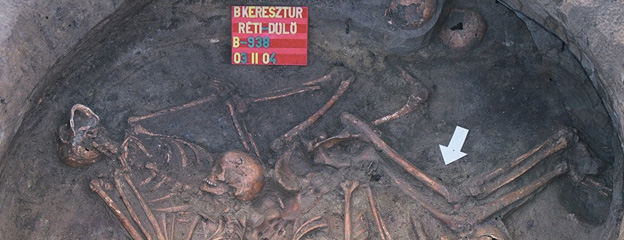XIII. North European Symposium for Archaeological Textiles (NESAT)
2017. május 22-26. között a csehországi Liberecben kerül megrendezésre a XIII. North European Symposium for Archaeological Textiles (NESAT) konferencia. A régészeti korú textilekkel foglalkozó tudományos összejövetelt 1981 óta háromévente rendezik Európa valamelyik nagyvárosában, és minden alkalommal igen nagy érdeklődésre tart számot.
Kutatócsoportunkat – ha textilekről van szó, akkor természetesen most is – Pásztókai-Szeőke Judit képviseli, aki a keddi, őskori szekcióban mutatta be a magyar textilrégészet legfrissebb kutatási eredményeit.
Előadásának angol nyelvű kivonata:
Pásztókai-Szeőke, Judit – Kiss, Viktória – Kulcsár, Gabriella – Mordovin, Maxim – Mráv, Zsolt – Polgár, Péter – Radman-Livaja, Ivan – Szeverényi, Vajk – Szathmári, Ildikó – Vida, István
Mixtura texturalis – recent research of archaeological textiles and textile production in Hungary
Despite the internationally acknowledged work done by outstanding Hungarian textile conservators, as well as the annually growing and significant number of textiles, tools and other finds related to textile production and excavated in Hungary, archaeologists have only shown lack of research interest toward this evidence until recently. Due to their indifference, this region has been a blank area on the map of the European archaeological textile research so far. Fortunately, the last years brought some changes and innovation into the traditional approach of Hungarian archaeology, and several new research projects (Momentum Mobility Research project, and Maxim Mordovin’s project) either have a focus on textile production, consumption and trade or have incorporated these topics into their complex socio-economical analysis.
The results from ongoing research of three archaeological periods – Bronze and Roman Age, Medieval period – would be presented in our proposed paper. In the form of tools and textile imprints on ceramics, abundant evidence has been gathered together from several Bronze Age sites. Their research and interpretation go on parallelly with of the anthropomorphic pottery and clay figurines from the same period. Research of the local textile production during the Roman period started a decade ago and has two focal points now: one is on the publishing of the abundant corpus of textile tools and inscribed identity tags of lead from an early workshop for cleansing and refurbishing valuable garments; the other is on the textile imprints on late antique lead seals.
Another group of lead seals (sometimes with textile impressions, too) is not only a telltale archaeological evidence for the entangling long-distance textile trade in Medieval Europe, but provide us with an excellent insight into the deceitful activity of the local 17th century workshop(s). They fulfilled the increased need for garments raised by the mercenary troops fighting against the expansive Ottomans by imitating locally the otherwise from England imported woollen broad cloth.
A konferencia részletes programja elérhető itt.








